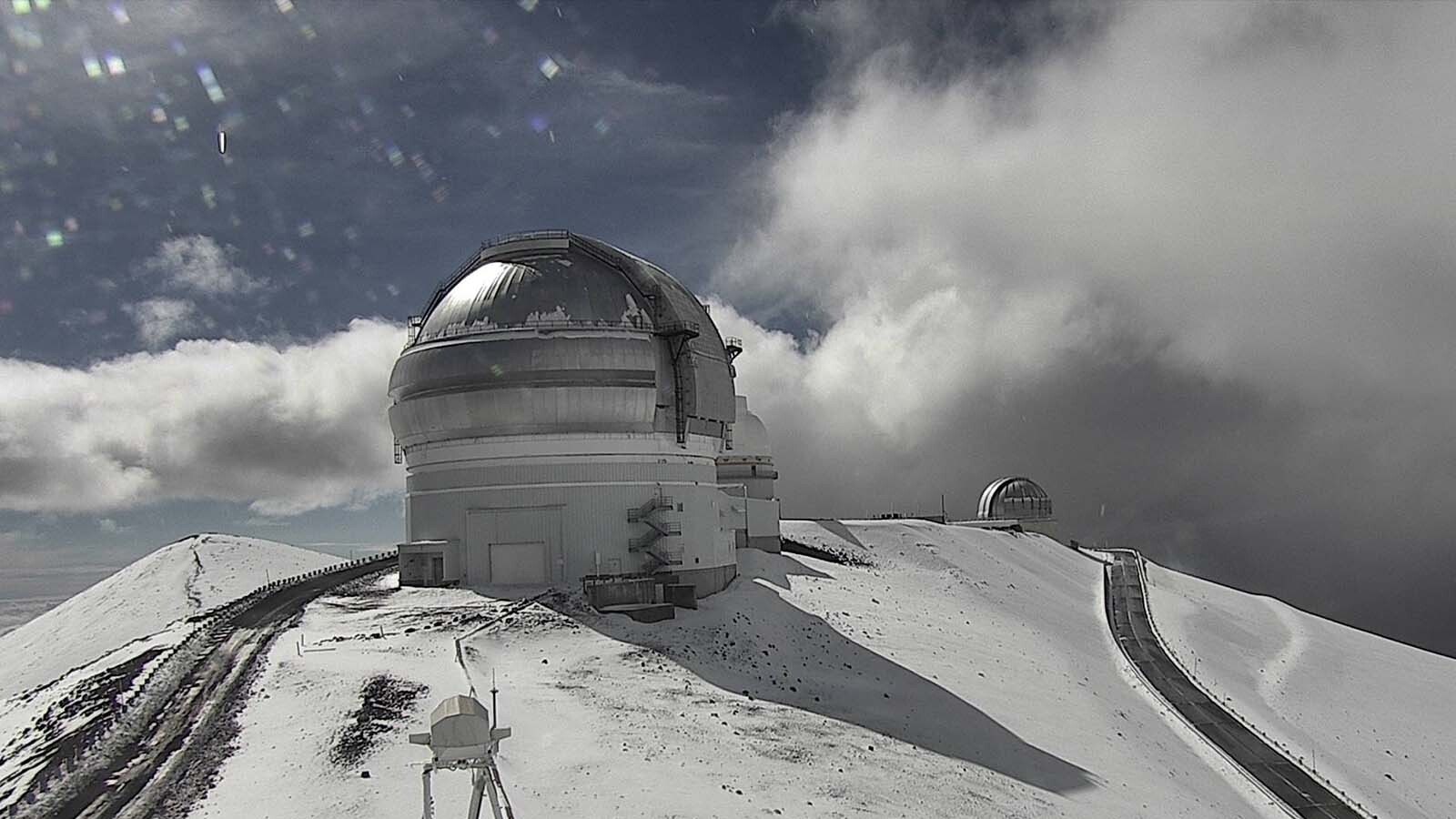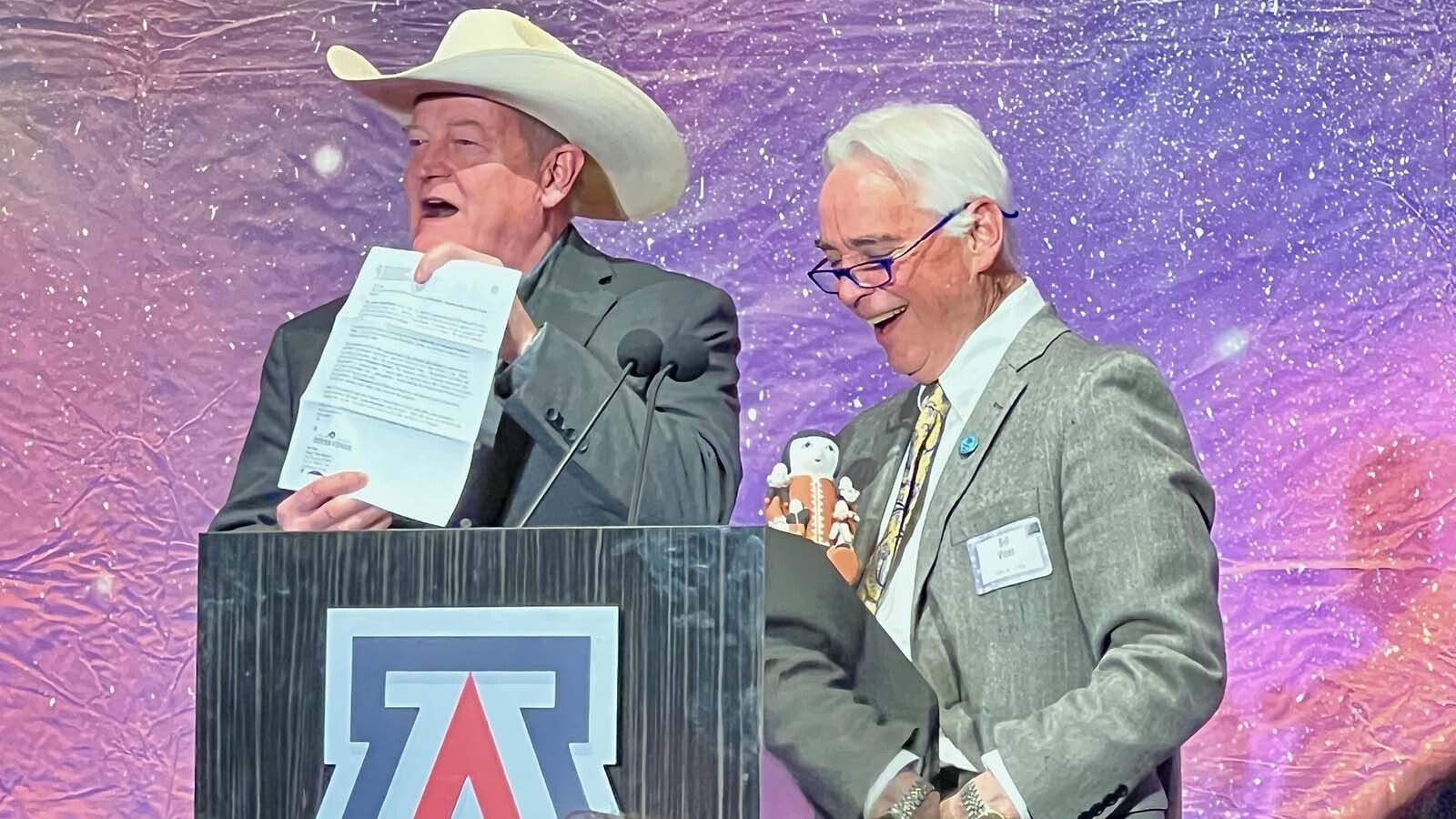Old Faithful is most famous geyser in the world and most popular attraction in Yellowstone National Park. But for anyone who wants to swim in its scalding waters, you’re about 70 years too late.
But there was a time.
Between 1914 and 1951, Old Faithful visitors could pay a small fee and swim in the same thermal water erupting from the geysers in the Upper Geyser Basin. Some lifelong Wyoming residents can still remember it as part of their Yellowstone experience.
“I always look forward to getting to Old Faithful and going for a swim,” said Cody historian Bob Richard. “It was one of the highlights of Yellowstone as a kid. They had a big rope off one of the cross beams, and we'd swing out over the water on the rope and play Tarzan.”
Old Faithful wasn’t the only pool open to the public that has since closed. The rise and fall of the public pools at Old Faithful and Mammoth Hot Springs reflected how priorities changed in Yellowstone National Park, taking the amusement park out of the national park.
Brother’s Bathhouse
In 1914, Henry J. Brothers got permission to build a bathhouse in the Upper Geyser Basin adjacent to Old Faithful. He’d soon be profiting from Yellowstone’s geothermal water.
“It was built southwest of Castle Geyser, on the same side of the Firehole River as the Old Faithful Inn,” Alicia Murphy, Park Historian for the National Park Service in Yellowstone, said. “This was before the establishment of the National Park Service, so the U.S. Army was still in charge of the park.”
According to Yellowstone’s 1920 regulations, visitors could take a dip in the bathhouse’s large pool for 50 cents, a little over $8 in 2024. But visitors could access Brother’s “private pool” for an extra 50 cents.
There isn’t much information on Brothers’s bathhouse, which he sold to a new concessionaire in 1935. Murphy said it reflects the more exploitative mindset prevalent throughout Yellowstone in its first century as a national park.
“We had a different understanding of what national parks were for at the time,” she said. “I think our early managers were more interested in getting the word out that national parks existed, making sure people knew about them and wanted to visit them. That meant they were a little more interested in providing entertainment for visitors when they came to visit, and that was reflected in things like swimming pools at Old Faithful and Mammoth.”
This was the same mentality that permanently changed the Morning Glory Pool, as tourists filled it with coins, treating it as a brilliantly blue wishing well. The coin and other trinkets tossed inside partially blocked the pool’s conduit, lowering its temperature and changing its color.

Solitary Source
The bathhouse’s water source was Solitary Geyser, an inert thermal pool over half a mile away from the bathhouse. Brothers took actions that would be considered sacrilegious today to get thermal water from that pool to his pools.
Over half a mile of piping was needed to connect the Solitary Pool to Brother’s bathhouse. Solitary’s outlet channel was dredged and deepened, lowering its water level, and wooden channels were installed along the pipeline to cool the water as it moved downhill to the bathhouse.
The Solitary Pool didn’t become a Solitary Geyser until it was tapped for the bathhouse. The lower water level caused boiling at a lower depth, and the pool started erupting regularly.
This was considered fair and reasonable business at the time. Murphy said several concessionaires tapped into Yellowstone’s geothermal resources for their enterprises.
“We had quite a lot of infrastructure that was drawing on those thermal systems,” she said. “Before refrigeration, Yellowstone had geothermally heated greenhouses to feed all the visitors and staff. They had to get that food from somewhere.”
Bigger And Better?
Charles Hamilton acquired the bathhouse in 1935. Hamilton started working in Yellowstone in 1905 and became the park’s biggest concessionaire by 1935, establishing the general stores that still exist today at Old Faithful, West Thumb, Lake and Fishing Bridge.
Hamilton transformed the bathhouse into the much grander enterprise that Richard remembers. The swimming pool, large enough for 135 people, was housed in a massive log building and overseen by a 25-foot-tall lifeguard tower.
“It was a log building with lots of windows northeast of the Old Faithful Hotel,” Richard said. “And it was a very large pool, comfortable to swim or wade in, and that rope to swing on.”
Everyone knew it as the Old Faithful Swimming Pool, but the exact name is debated.
“They were often called plunges back then,” Murphy said. “But they were real swimming pools.”
That historical precedent is still reflected today with the Star Plunge in Thermopolis, another thermal pool established in 1900.
Memories Of Mammoth
Around this time, another geothermal swimming pool was constructed at Mammoth Hot Springs. There’s less information about this pool, but Murphy said it was part of a more extensively developed area.
“It was just below the terraces and south of Capitol Hill,” she said. “There was a lodge and bunch of cabins in that area at that time, and it was affiliated with that little development.”
Richard remembered the Old Faithful Pool as “Olympic-sized,” around 164 feet long, 82 feet wide, and between 6 and 10 feet deep. According to Yellowstone’s archives, he isn’t too far off.
“The Mammoth Pool was 40 by 100 feet in size and ranged from 3.5 to 5 feet deep,” Murphy said. “These weren’t jacuzzi-sized pools of water. That’s about the size of an average city pool.”

Education Not Entertainment
The Old Faithful Swimming Pool (or Plunge) was a Yellowstone mainstay until 1951. Then, the swimming pools at Old Faithful and Mammoth were closed and removed, and their locations were reclaimed.
Several factors are cited for the pools' closure, including higher public health standards and the increasingly arduous maintenance required to keep them going. But, according to Murphy, one of the main factors was the changing attitudes about what the national parks were and could be.
“By the time those pools were removed, we were starting to understand the detriment of drawing on the thermal features to heat greenhouses and swimming pools,” she said. “
Nothing To See
While several of Yellowstone’s historic structures are and continue to be preserved, there are no signs of the Old Faithful and Mammoth Swimming Pools on the landscape today.
No markers or interpretive panels discussing their location and history have been placed at their respective locations. Murphy thinks it would take a trained archaeologist to find any signs of them.
“It's not something that the average person would be able to look on the landscape and identify,” she said.
The most enduring legacy of the Old Faithful poll is the still-active Solitary Geyser. Since the pool was altered and utilized for the bathhouse, the geyser has erupted every four to eight minutes in the century since.
The Old Faithful Swimming Pool is an intriguing institution in Yellowstone’s vast history but hasn’t been celebrated since it disappeared. For Murphy, it represents the evolving philosophy of the National Park Service’s mission and how it fulfills the standard set by President Teddy Roosevelt, inscribed over the North Entrance: “for the benefit and enjoyment of the people.”
“By that time, we had a different understanding of what national parks were for,” she said. “This was certainly a place for people to come on vacation, but it was also an educational opportunity. Visitors should be looking more towards nature, as opposed to these kinds of artificial entertainments.”
Contact Andrew Rossi at arossi@cowboystatedaily.com

Andrew Rossi can be reached at arossi@cowboystatedaily.com.





